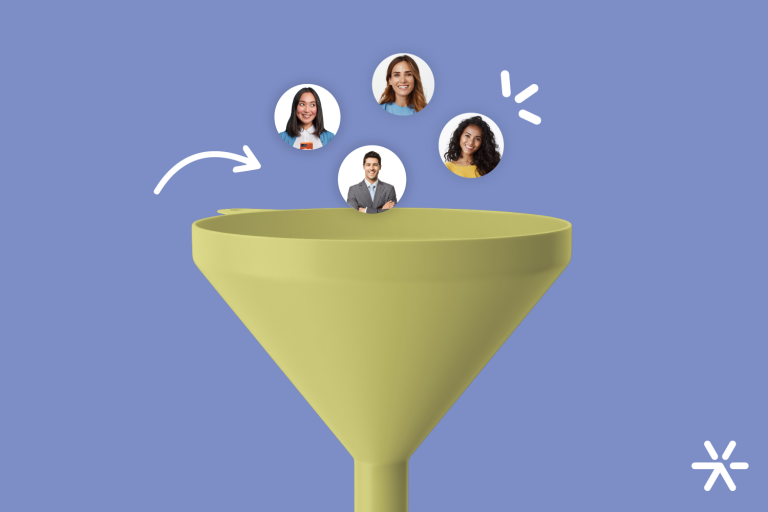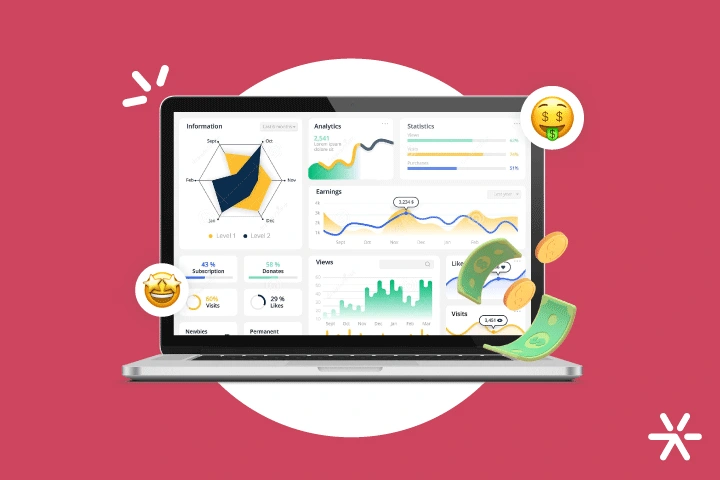10 B2B Prospecting Strategies from the Best Companies
B2B prospecting differs from the work performed by the sales team that deals directly with retail.
Generating leads, qualifying contacts and closing deals when selling to another company – and not to the end consumer – brings new challenges.
For many professionals, this market raises doubts – and to resolve them, we created this content!
Here we will talk about the characteristics of B2B customer prospecting , the stages of this strategy and also bring 10 examples that are used by the best companies to achieve the desired results.
Continue reading to find out!
What is B2B customer prospecting?

B2B customer prospecting is the act of generating , nurturing and building relationships with a network of contacts, with the expectation that these leads will convert into sales.
Unlike the B2C market, where prospecting actions generally seek to reach a wider audience, in the B2B universe these actions are much more specific.
This happens because B2B companies need, in addition to finding the ideal partners to do business, to get in touch with the right decision-makers within these companies.
Want an example?
Picture Apple, a company that designs and sells electronics with a focus on the B2C audience. To prospect new customers, the brand invests extensively in branding and advertising strategies , with the aim of becoming a recognized and desired brand, impacting as many people as possible.
Now, imagine ExactSales, a lead management software for the B2B market . Investing in branding and advertising in such a broad way doesn’t seem like a good idea, do you agree? This company can probably generate better results with more targeted prospecting.
In this example, the brand needs to identify new companies to do business with and find the right professionals within these companies to take a commercial approach. After all, there is no point in finding the right company and trying to sell the software to an intern who has no decision-making power or to a professional from another area.
What is B2B sales?
To further improve your understanding of B2B customer prospecting, let’s differentiate the terms: B2B, B2C, B2B2C, B2G.
- B2B – Business to Business (B2B) is the relationship between companies for companies. In other words, the focus of this business model is to offer products and services to other companies. As an example we can cite Leadster itself , we are a company that sells to other companies, not to individuals.
- B2C – Business to Consumer (B2C) is nothing more than the business model between a company and the end consumer . As an example, let’s talk about any clothing store in a shopping mall , its objective there is to directly serve the end consumer.
- B2B2C – Business to Business to Consumer (B2B2C) is the combination of B2B and B2C relationships. This business model boils down to a transaction between companies aimed at selling to the end customer . We can talk about iFood , which offers the service to food companies, which offer the product to end consumers.
- B2G – Business to Government (B2G) are negotiations between companies and government . Remembering that, normally, this business model goes through a bidding process (public competition). For example, we can mention the real estate factories that sell tables and chairs to public universities .
Why is B2B prospecting important?
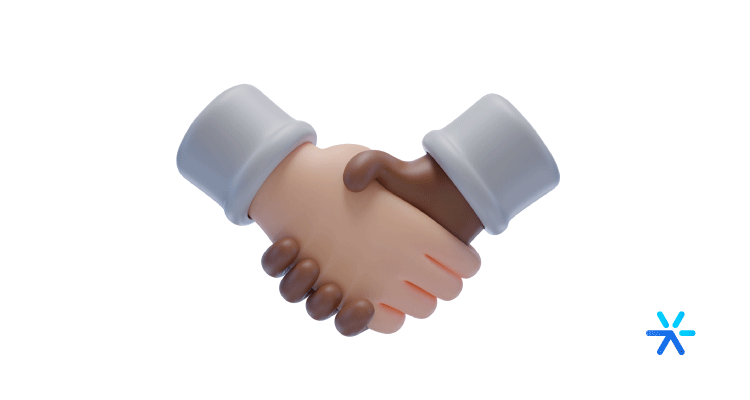
In the B2B context, prospecting aims to create this relationship between two companies and usually happens actively , when the commercial or marketing team looks for new possibilities for closing sales.
B2B customer prospecting is fundamental to business success, as it reaches the right people at the right times, provides contact qualifications, directs where teams should dedicate time and effort, accelerates the sales cycle and generates business opportunities. .
Who is responsible for business prospecting?
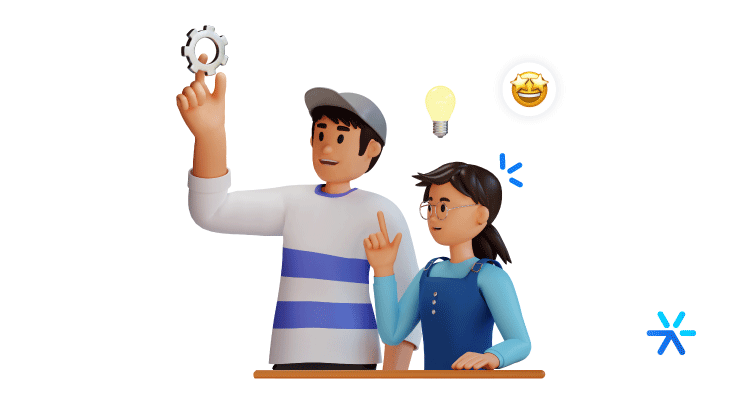
The answer to this question varies from company to company.
But, in general, business prospecting is the responsibility of the sales team , whether through salespeople, pre-salespeople, superintendents, managers, directors…
In the B2B market, it is common for large contracts to be prospected through higher positions in the hierarchy.
In addition, the marketing department can also act at the beginning of prospecting , generating leads for the sales team, qualifying contacts and providing support materials that will assist the entire sales process.
How much does a B2B salesperson earn?
According to data from the website Glassdor, the average salary of a B2B salesperson in Brazil is R$1,950.00 per month.
However, this value varies depending on the seller’s knowledge and experience. Let’s look at their positions:
- Sales Representative (Sales Development Representative – SDR) : R$ 2,303.00/month;
- Senior sales representative: R$8,428.00/month;
- Sales manager: R$ 17,019.00/month;
- Closer: R$ 2,621.00/month.
What are the characteristics of the shopping journey and the B2B funnel?
The shopping journey or consumer journey is the entire path that the consumer takes between the awakening of a doubt or need and the purchase of a product or contracting a service that will resolve that issue.
The marketing funnel can be considered the main tool for brands and companies that want to analyze and predict their consumer behavior.
With this resource, it becomes possible to identify points that can be improved during the shopping journey and opportunities for growth, generation and qualification of leads.
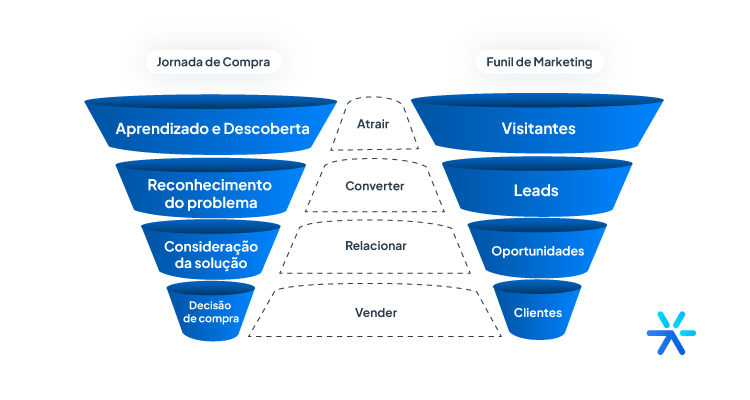
In the case of the B2B sales funnel , according to the business needs, the segment in which the selling and purchasing companies operate and the type of contract determined, the funnel can have different focuses, such as converting qualified leads, nurturing leads or decision making.
The importance of data and technology in B2B prospecting
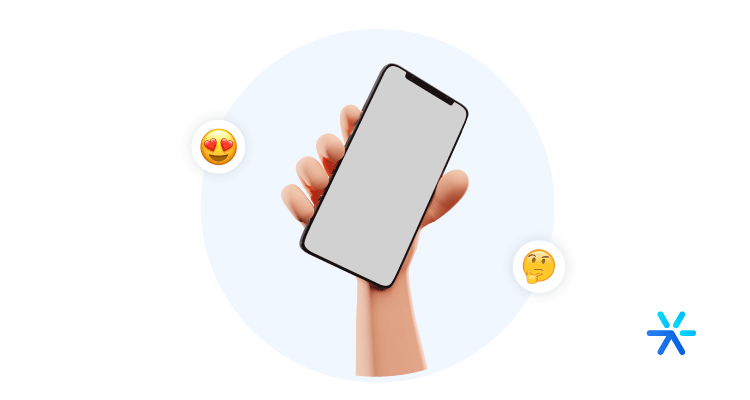
As we mentioned, in many businesses prospecting for B2B customers takes place actively and under the responsibility of the commercial department.
Often this team is not that large and then a problem arises: the difficulty of scaling the process.
If we depend solely on sales professionals to carry out the entire generation, nutrition, qualification, relationship and closing process, we are faced with the factors of time and resources , which are limited.
Technology comes in to solve this issue, as it allows the storage of the entire history and evolution of each contact, facilitates the capture and service of contacts looking for the company and also assists the work of salespeople, with the automation of some phases process (such as pre-qualification, email automation, etc.).
Data is also essential in this process.
They help identify the size of the potential market for each segment, build and update contact lists for prospecting, identify and improve stages of the sales funnel that present the biggest bottlenecks…
Just as B2B consumer behavior has evolved over the years to become increasingly digital, B2B prospecting also increasingly relies on technological resources and data intelligence to keep up with this trend.
What are the stages of B2B prospecting?
There are still a few steps within the prospecting phase.
Let’s address each of them now.
1. Search
In the first phase, research, the responsible teams must locate potential consumers.
In the case of B2B, this means not only understanding which companies might be interested in the solution offered, but also identifying who are the professionals in the companies who will act as a focal point for contact.
With the public formed, the teams seek to impact these contacts, through
- Adverts;
- Content marketing;
- Cold calling ;
- Between others.
This impact could end up generating a first conversion .
2. Qualification
Once these contacts have been identified, the next phase is related to understanding the quality of that lead.
To be considered a qualified lead , they need to meet some criteria that your company determines and that need to be aligned with the persona (which represents your ideal customer profile).
Some qualification criteria are:
- Purchasing power;
- Purchase maturity;
- Sufficient structure to receive the solution.
3. Prioritization
After defining which leads are best qualified, the sales team must prioritize them, acting where the chances of closing a deal and generating revenue are greatest.
4. Identification of decision makers
Another characteristic point of the B2B sales process is that the hiring decision is not just in the hands of a professional, so identify the decision makers .
It is common for it to be necessary to make contact with influencers, professionals with whom salespeople need to speak before reaching decision-makers.
Therefore, even before the first contact, being aware of this hierarchy line is important to take the next step.
5. Preparation of the approach
Preparation of the approach can be the decisive factor between a failed contact and a contact that will open up the beginning of a business relationship.
With all the information gathered up to this stage, the person responsible for the contact must prepare by thinking about points such as:
- Buyer’s pains and needs ;
- Arguments that he will use when faced with sales objections that he may present.
It may also be necessary to understand more about the company or segment of the company you are prospecting.
6. First contact
After detailed preparation, the first contact with decision-makers is made by the potential buyer.
Your salesperson needs to be able to create a space to present what the company offers, while maintaining the focus on the consumer’s needs and opportunities.
And this is just the beginning of the conversation.
7. Follow-up and contact evolution
The seller may be required to:
- Be constant and persistent .
- Get in touch several times;
- Show the full potential of the solution offered;
- Clear possible doubts ;
- Stimulate potential buyer interest .
Depending on the type of product or service, samples or demonstrations may be offered, in addition to sending a quote if the lead is open to doing so.
The intention here is to evolve contacts within your sales funnel.
8. Recording information
Throughout the sales process, it is essential that the responsible seller records information such as:
- Evolution of contacts;
- Follow-up dates;
- Data on business evolution;
- Difficulties encountered throughout the negotiation.
In addition to serving to keep the process updated if salespeople are replaced along the way, this information will serve as learning for future sales.
9. Learning
All this information and the process itself will impact one of the most important phases of prospecting: learning.
It is essential that the sales team shares their experiences (successful or unsuccessful) so that the prospecting process is constantly evolving.
Thus, even if a contract is not closed, the team will be able to more easily overcome the difficulties that were encountered and thus increase the chances of closing the next sale or contract.

10 B2B Prospecting Strategies from the Best Companies
1. Lead generation
Just doing cold calling or relying on referrals from other customers can take a company into the red, as it is generally necessary to generate a large number of contacts for some of them to progress to closing.
Therefore, most B2B companies already work with generating leads in the prospecting stage.
Generating new contacts is directly related to generating new business and expanding opportunities for your company’s commercial area.
This strategy is generally the responsibility of marketing or pre-sales teams , who use methods such as market research, list generation, advertisements, content marketing and conversational marketing to capture leads.
Let’s look at an example:
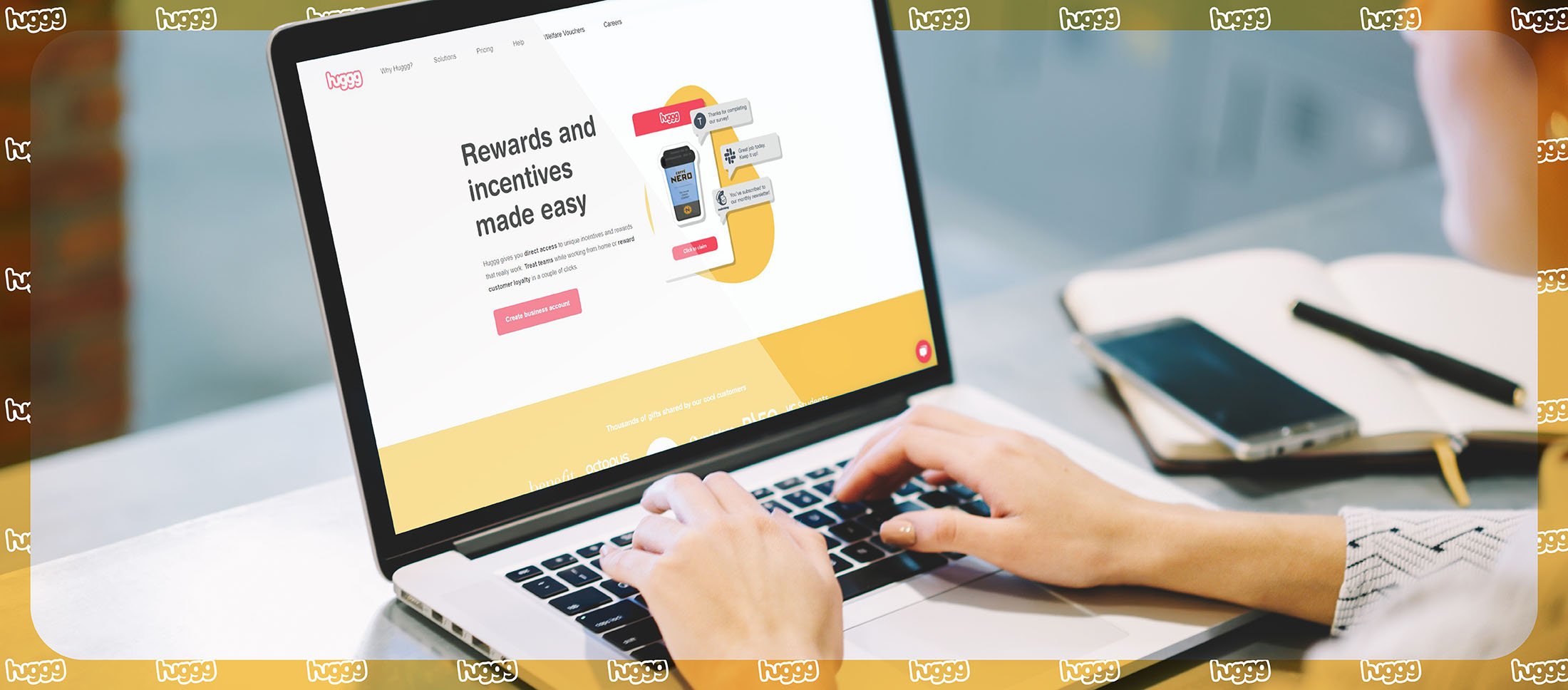
In this case, Huggg, a British company that sells gift cards , was going through a transition in its business model. The company wanted to take its focus off the B2C market, where it had been operating until then, and create a new strategy aimed at the B2B market.
With the help of a company specialized in prospecting and lead generation, they were able to build a contact base from scratch, according to the audience they wanted to reach.
From this list, Huggg was able to develop other prospecting strategies, such as sending emails and cold calling – in addition to creating personalized audiences for its ad campaigns, generating even more leads with the same profile.
In summary: lead generation strategies were essential to the company’s successful transition between B2C and B2B models.
2. Conversational marketing
Conversational marketing covers actions and tools related to the context of conversations.
It can be explored with technologies such as chatbots and virtual assistants .
These tools can help capture leads, on conversion pages and on websites, in addition to helping the sales team focus on what really matters, as the doubts part can be resolved by these automation solutions.
Conversational marketing also works at the pre-qualification stage, so that sellers have warmer contacts to work with.
Just take a look at this case:
Revenda Mais is the largest management system for dealerships in Brazil. The site already received a large volume of visitors thanks to the investment the company made to generate paid traffic .
The problem is that few of these visitors were converting on the website’s contact form.
The solution was to replace the form with the Leadster chatbot, applying all the principles of conversational marketing – such as personalizing approaches and A/B testing for conversion optimization .
With this change, Revenda Mais managed to double its website’s lead generation , generating revenue of R$250,000 in new contracts – all during the pandemic.
3. Cold calling
Cold calls are contacts made via telephone.
They make it possible to establish more personal contact than other channels and can be used to speed up the qualification process.
This is a traditional method, but it does not lose ground as it is highly effective.
According to a survey by InsideSales, 54% of B2B buyers reported that their last meeting aimed at purchasing or contracting a service was scheduled via telephone contact.
It is very common for B2B companies to have pre-qualification teams, sales development representatives (SDRs) or outsourced partners to carry out this work.
An industrial chemicals company wanted its salespeople to have more free time to build relationships and close sales, accelerating the company’s growth process.
By hiring a consultancy to develop and outsource their cold calling strategy , they were able to make more than 4000 calls, develop around 400 conversations and convert 169 leads over 10 months.
This work helped reduce the company’s operating costs and save salespeople time, who were finally able to focus on developing only qualified leads and scaling growth.
4. Email
Just like calls, email allows you to start conversations with leads, in addition to nurturing these contacts.
Email is also a great option for following up on sales, when combined with other strategies.
This strategy allows the lead to give feedback to the sales representative at a time when the representative considers it appropriate.
This can be an advantage, as it does not strain the relationship, but also a disadvantage, as it makes contact more spaced out.
Know how to explore this tool wisely.
Also explore email automation tools to streamline the process and give traction to your prospecting strategy.
Agisko, an IT and security company, wanted to find a new audience and start a conversation with these professionals.
5. Social selling
Social selling means using social media to connect with potential consumers. It involves strategies of both individual contact and advertisements aimed at this purpose.
In the case of the B2B market, the main tool used for this purpose is LinkedIn .
The social network stands out in B2B prospecting because it has a highly segmented audience, in addition to containing information that is essential for many strategies developed in this market (such as company size, professional positions, etc.).
Example time!
InContact is contact center software that targets small , medium and large companies.
A few years ago, the company’s sales manager decided to test a social selling strategy .
A group of salespeople was trained to publish content on LinkedIn and use the platform to engage with potential consumers – while another group was left out of the strategy.
After 6 months, salespeople who were using LinkedIn had increased their sales revenue by 122%, in addition to identifying new business opportunities and closing better contracts.
6. ABM
ABM or Account-Based Marketing is a strategy that involves identifying and obtaining contacts of high commercial value, pre-defined according to the objectives and personas of each brand.
This strategy differs from traditional prospecting because the objective here is different: instead of creating a list of leads for cold calling , contacts are added to marketing and advertising strategies, to receive highly targeted and personalized ads and offers.
This way, campaigns are only shown to those potential customers who are really of interest.
Despite having higher costs than traditional marketing campaigns, its effectiveness is also greater, as it does not run the risk of attracting an unqualified audience to your solution.
Check out an example of B2B prospecting using ABM:
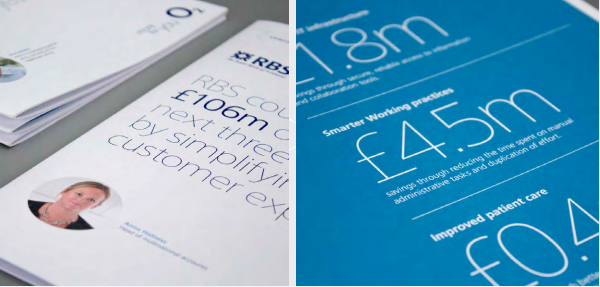
The company O2 Business offers information and communication technologies to large business groups in the United Kingdom.
The company’s challenge was to position its brand among a more senior audience, initiating new conversations with c-level executives . Initially, the marketing and sales teams worked together, generating a highly segmented list of target companies.
To reach the desired audience (top executives), it was necessary to focus on the strategic priorities of these companies and explore possible commercial benefits.
So, O2 Business developed a calculation based on research from the Center for Business and Economic Research and data from each specific market, generating the projected savings that each of the target companies would have when hiring its solutions.
This report was sent by email to executives, with enormous commercial impact. In addition to gaining the attention of professionals considered “untouchable”, the targeted action resulted in generating revenue in the 7-digit range.
7. Indications
Referrals have a prominent place in B2B prospecting.
Although they do not generate a large volume of contacts for the commercial’s work, they certainly generate qualified contacts.
This is because contacts who arrive via referral have the validation of a trusted company that has already worked with the brand and that approved the solution delivered to the point of recommending it.
Furthermore, these highly qualified leads are practically “free” for the company, as they do not require a large investment in marketing to generate, nurture and qualify them.
But that doesn’t mean you shouldn’t invest in this strategy!
Many B2B companies achieve great results from referral programs that encourage the recommendation of new contacts, offering benefits such as discounts and bonuses in return.
See an example:

Email provider Zoho started its referral program in 2013. When referring new customers to the company, current customers could add up to 20 new users to their email plan, free of charge.
A simple but effective strategy.
The project was a success especially among small and medium-sized companies, which do not want to spend extra money to create new email addresses each time they hire a new employee.
8. Events
Events have also been used for B2B prospecting for a long time.
It is part of the dynamics of this type of business to expose the brand and participate in movements in the sector through in-person and virtual events.
Furthermore, this type of situation creates opportunities for personal presentation and the beginning of a relationship, mainly by making the salesperson’s work easier, by bringing together several contacts of interest in the same place.
We don’t have to go that far to find a good example of a B2B event:
Resultados Digitais (RD) is a leader in the development of automation software aimed at the marketing and sales areas. One of the company’s pillars for market education and brand strengthening are events.
In addition to promoting several regional and virtual events throughout the year, the company promotes an annual conference that every marketing and sales professional in Brazil has heard of: the RD Summit.
With a larger audience each edition, the event is a great lead generation , prospecting and relationship strategy for RD itself, but also for exhibitors and participating companies.
In the 2019 edition – the last one held in person before the pandemic – more than 80 thousand leads were generated during the business fair, with a sponsor return rate of 70% and satisfaction of 4.5/5.
9. Door-to-door
This type of door-to-door strategy involves personal presentation for business prospecting.
It is very common, for example, in the health and medicine sector, when the sales representative goes to clinics, hospitals and doctors’ offices to personally present the solutions and advantages offered by the laboratory.
Also in the editorial and educational segment, in which representatives from textbook publishers and education systems visit schools to present their solutions.
Here, the personal power of connection is explored .
In general, this is not a cheap strategy, because it involves travel and travel costs for sales representatives, who often arrive at the company without being sure that they will be served.
But it is possible to reduce costs and increase the effectiveness of this strategy by linking it to others, such as pre-qualifying contacts, scheduling meetings in advance and sequencing meetings in the same city or region to reduce the need for travel.
Let’s see an example of door-to-door prospecting ?

SW Anderson is a distributor of standard fasteners, OEM components and electromechanical components that has been operating in the U.S. since 1926. The company has built a multimillion-dollar business based primarily on the efforts of its outside sales teams.
Times have changed a lot since the company’s inception, but the role of salespeople in the field has not lost its importance. On the contrary: the door-to-door strategy was constantly updated and strengthened with the help of new B2B prospecting strategies.
The insights and resources produced by the inside sales teams , for example, began to serve as support for the field team to take more assertive and personalized approaches according to the prospect’s engagement in other lead generation campaigns (such as cold calls and emails).
As a result, the external sales process gained more speed and the company became more competitive in relation to competing distributors and manufacturers.
10. Direct Mail
Direct mail , despite generally having a higher cost, can be interesting for creating a bond with prospects.
In a world where almost every type of communication has migrated to digital, sending physical or printed material can add great value to business contact.
Additionally, you can explore direct mail to create a personal connection and to send catalogs, samples, or product demonstrations.
See a case using this strategy in B2B prospecting:

Dell, the technology company, wanted to get noticed and generate conversations with IT managers and CIOs. To achieve this, the agency responsible for the company’s account planned a direct mail campaign that had a great impact on this audience and generated a buzz on social media.
The material sent to prospects contained a light bulb that was activated as soon as the package was opened, representing the need for innovation in the area of technology. Before and after the action, emails were also sent and calls were made with the offer of specialized consultancy in the area.
The campaign resulted in a £5 million pipeline of business opportunities for Dell.
Organizing the B2B prospecting flow in your company
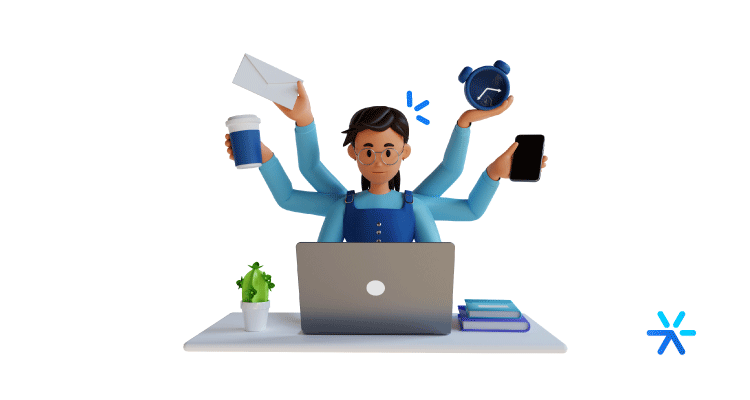
There are a few B2B prospecting flow options .
Regardless of the choice of model that will be used in the company, the most important thing is that it is organized and followed by all professionals involved.
The traditional model, which is used by several B2B companies, generally involves lead generation , pre-qualification , contact by email or call , scheduling a visit/meeting and closing .
Another interesting example of flow organization is the model created by Cognism that involves a sequence of social selling , emails and calls .
This is an interesting option for companies that had offline prospecting hampered by the pandemic or for companies that want to digitize their processes.
How we organize ourselves here
Finally, we decided to also divide the prospecting flow that we use here at Leadster:
- We generate traffic to the website through paid media and organic marketing strategies .
- We capture and pre-qualify leads through the website.
- We then offer the user a free trial of the platform for 14 days.
- During the free trial, we approach you via email and WhatsApp , so that the lead doesn’t lose contact with the brand.
- The test result is what determines whether or not it is a qualified lead for our commercial. This is because we work with the concept of Product Qualified Lead (PQL) – that is, the most qualified leads are those who can implement and generate results with the platform independently.
- If the lead is qualified, it progresses to the next steps, which can happen in two ways: proposal and automatic contracting by the platform (in the case of plans with a lower ticket) or commercial contact, meeting, sending the proposal and closing (in the case of plans with higher ticket).
Finally, there are many ways to organize your company’s B2B prospecting flow, and the steps will always depend on the type of company, area of activity, customer profile, market particularities, available budget, limitations and opportunities.
So, are you ready to start your B2B prospecting?
If you want to receive even more tips and follow the best strategies for prospecting B2B customers, see how you can generate 3 times more qualified leads with Leadster!





